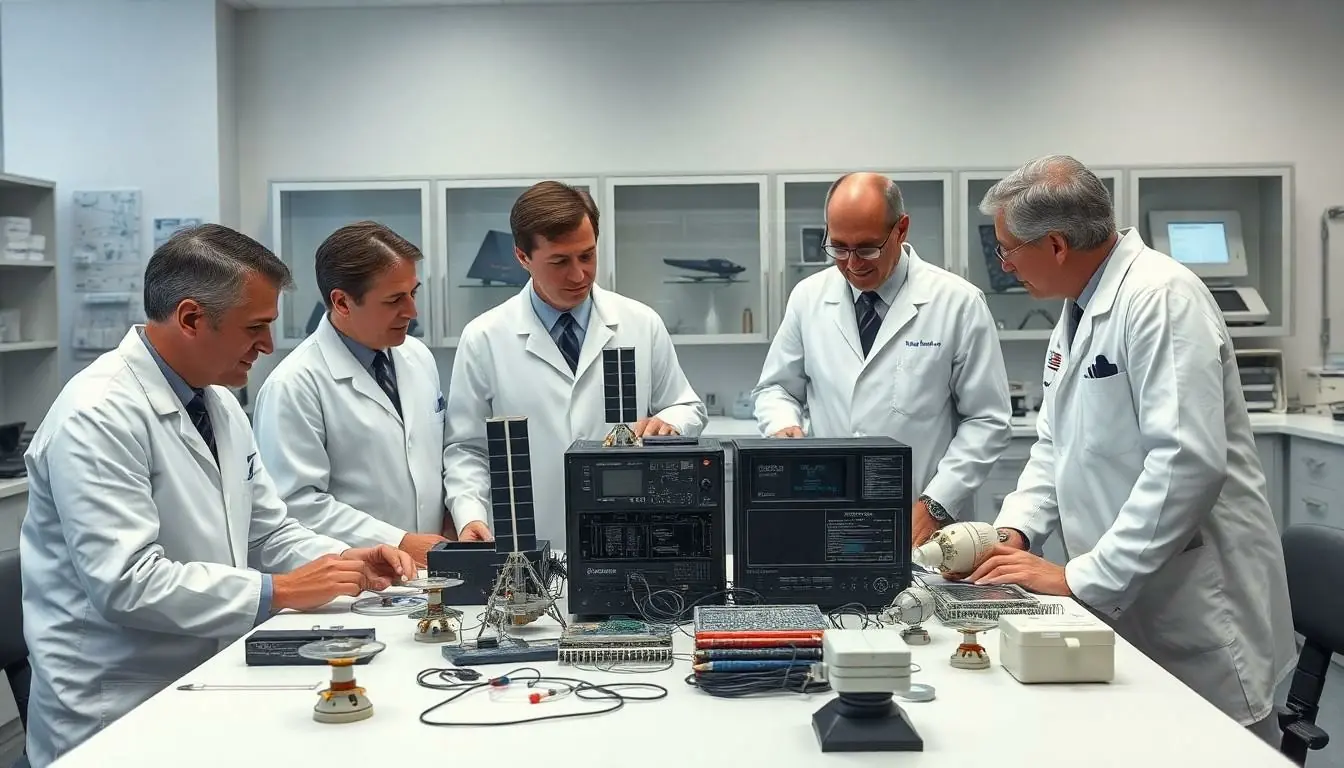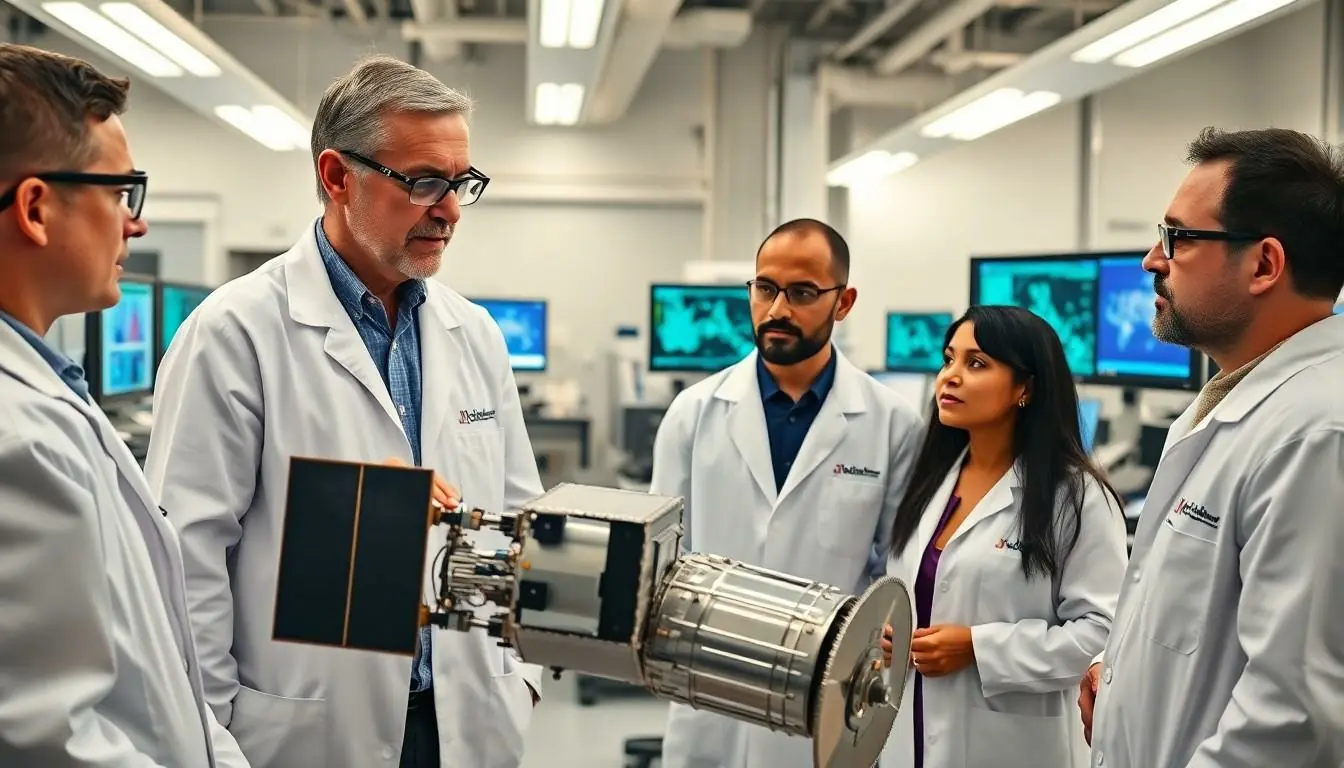The space race wasn’t just about rockets and astronauts; it was a cosmic competition that sparked a technological revolution. As nations scrambled to outdo each other in the quest for the stars, they inadvertently gifted us with innovations that transformed everyday life. From the humble microwave to the mighty GPS, the fruits of this rivalry are everywhere, often without us even realizing it.
Table of Contents
ToggleOverview of the Space Race
The Space Race marked a crucial era of technological competition primarily between the United States and the Soviet Union, spanning from 1957 to the early 1970s. This rivalry aimed to achieve significant milestones in space exploration, influencing numerous innovations. Launching Sputnik 1 in 1957 by the Soviet Union served as a catalyst for advancements, prompting the U.S. to increase its investment in research and development.
Innovations emerged rapidly during this period, with benefits extending beyond space exploration. Satellite technology experienced immense growth as nations sought to establish communication networks, leading to the development of telecommunications devices relied upon today. Additionally, advancements in material science occurred, creating heat-resistant materials essential for rocket and spacecraft construction.
Robotics also improved significantly, driven by the need for automated systems and remote exploration. Unmanned missions showcased robots testing the environment on planets and moons. The precision required in these missions led to enhanced computer technologies, which later found applications in various fields.
Health technologies advanced significantly as well, particularly in the context of human spaceflight. Monitoring systems and life-support technologies innovated through space programs greatly impacted medical equipment used in hospitals.
The Space Race also spurred the creation of satellite-based global positioning systems, revolutionizing navigation and logistics. Innovations in sensors, cameras, and imaging technology during this era contributed to remote sensing capabilities, transforming scientific research.
This competitive drive between nations not only brought about these advancements but also laid the foundation for ongoing technological development, shaping modern infrastructure and daily life.
Key Technologies Developed

Numerous technologies emerged from the space race, significantly impacting everyday life in various sectors.
Satellite Technology
Satellite technology advanced remarkably during the space race. The successful launch of Sputnik 1 in 1957 marked the beginning of satellite communications. Satellites now facilitate global communication, broadcasting services, and weather forecasting. For instance, GPS relies on a network of satellites for accurate positioning. This innovation has transformed navigation in personal devices, aviation, and shipping logistics. Consequently, modern infrastructure heavily relies on satellite technology for seamless interactions.
Computer Technology
Computer technology witnessed crucial developments due to the needs of space exploration. Early space missions required immense computational power for navigation and data processing. The creation of integrated circuits in this era allowed for smaller and more efficient computers. These innovations laid the groundwork for modern computing. Speed and capability increased in computers, paving the way for advancements in artificial intelligence and data analytics. In various fields, these enhanced computing technologies play a vital role today.
Material Science Advancements
Material science saw significant breakthroughs as a result of the space race. The need for heat-resistant materials led to the development of ceramics and composites used in rocket construction. Researchers created insulation materials to withstand extreme temperatures during re-entry. Such innovations contributed to safer and more durable products across multiple industries. In addition to aerospace, these materials enhanced consumer goods, automotive applications, and construction technologies. Advancements in material science shaped modern manufacturing and engineering practices.
Everyday Applications of Space Race Technologies
The space race fostered significant technological advancements, many of which now permeate everyday life. These innovations, from telecommunications to medical technologies, illustrate the lasting impact of that historic rivalry.
Telecommunications
Telecommunications technologies evolved remarkably during the space race. The need for satellite communication prompted the development of geostationary satellites, allowing global communication and television broadcasting. Networks established via these satellites now facilitate instant communication across the globe, enabling businesses, governments, and individuals to connect seamlessly. Innovations in satellite technology also contributed to improved weather forecasting. Today, real-time data collected from satellites helps track storms and monitor climate changes, enhancing public safety and awareness.
Medical Innovations
Medical technologies spurred significant advancements due to the space race as well. Monitoring systems developed during astronaut training laid the groundwork for modern health monitoring devices found in hospitals today. Life-support systems engineered for spacecraft influenced the creation of sophisticated medical equipment like ventilators and heart monitors. Techniques for sterilizing instruments using radiation, initially tested for space missions, became standard in surgical procedures. Innovations originally designed for space exploration ultimately transformed patient care, improving survival rates and healthcare outcomes significantly.
Future Impact of Space Race Technologies
Space race technologies continue to influence various sectors beyond their original intent. Satellite advancements enable numerous applications in telecommunications, allowing for improved global communication and connectivity. Innovations in this field ensure businesses and individuals can access information instantaneously.
Robotics developed for unmanned space missions set the stage for automation in manufacturing and services. Industries utilize these technologies to enhance efficiency and reduce human exposure to hazardous environments. The precision instruments created for space missions often find applications in fields like aerospace and defense, ensuring safety and reliability.
Health technology benefits greatly from the advancements made during the space race. Life-support systems initially designed for astronauts lead to breakthroughs in critical care devices. Monitoring systems help clinicians track patient conditions more effectively, improving overall healthcare standards.
Material science innovations, such as heat-resistant materials, find uses in diverse applications. These materials enhance not only aerospace engineering but also consumer products, contributing to the longevity and performance of everyday items.
Positioning technologies stemming from the space race revolutionize navigation and logistics. GPS has transformed how people and goods move, optimizing routes in real-time and drastically reducing travel times.
Energy solutions also emerge from space race technologies. Research into energy efficiency during missions fosters innovations in alternative energy sources, promoting sustainability on Earth. Lastly, the competitive spirit of the space race drives ongoing research and development, ensuring future technological breakthroughs that will continue to shape society.
The technological advancements stemming from the space race have profoundly shaped modern society. Innovations in telecommunications, robotics, and health technology continue to enhance daily life and improve efficiency across various sectors. The competitive spirit of the era not only spurred immediate breakthroughs but also laid the groundwork for future developments that remain vital today.
As these technologies evolve, their influence expands, driving progress in navigation, medical care, and sustainable energy solutions. The legacy of the space race serves as a reminder of how competition can fuel innovation, ultimately benefiting humanity as a whole.

